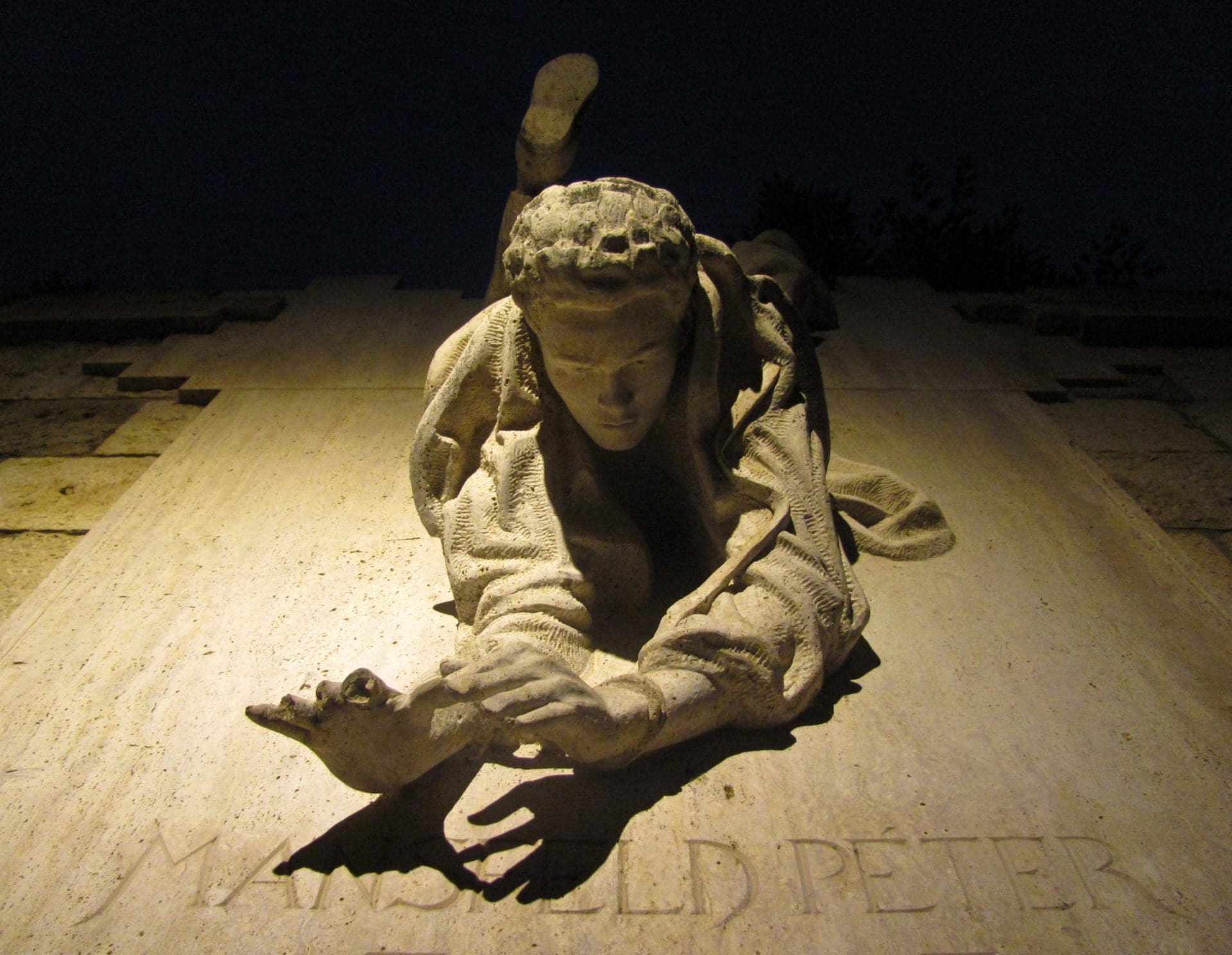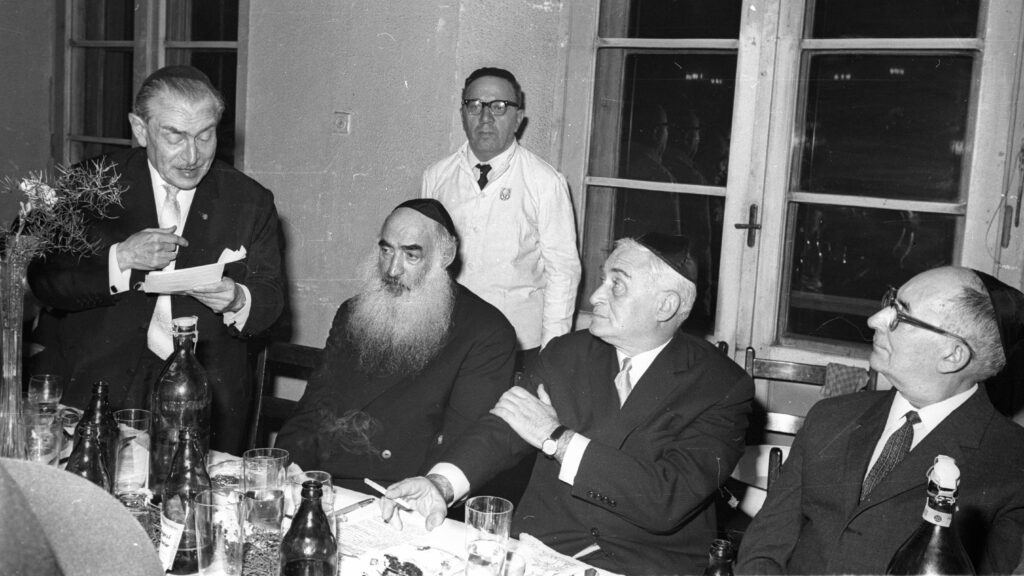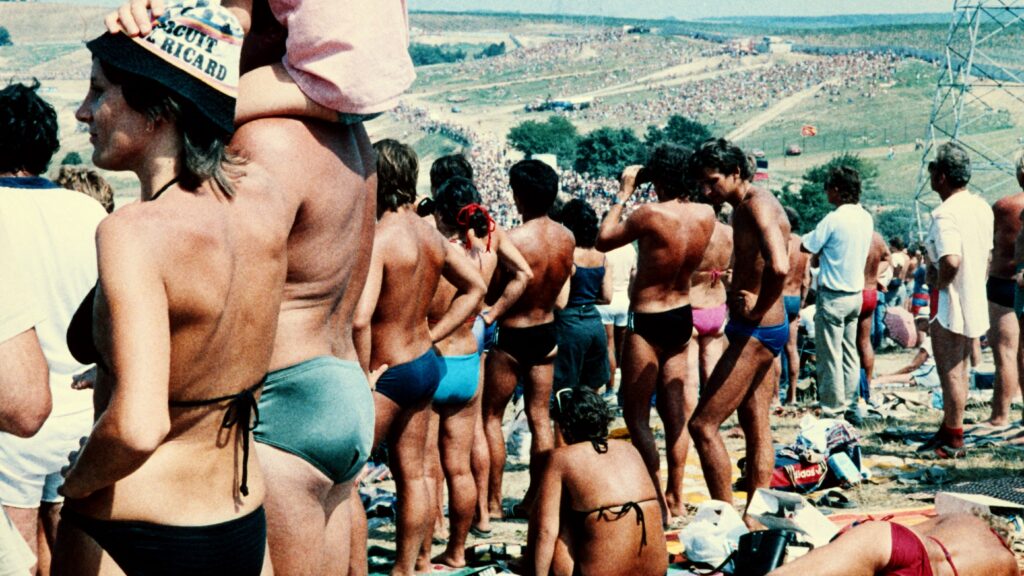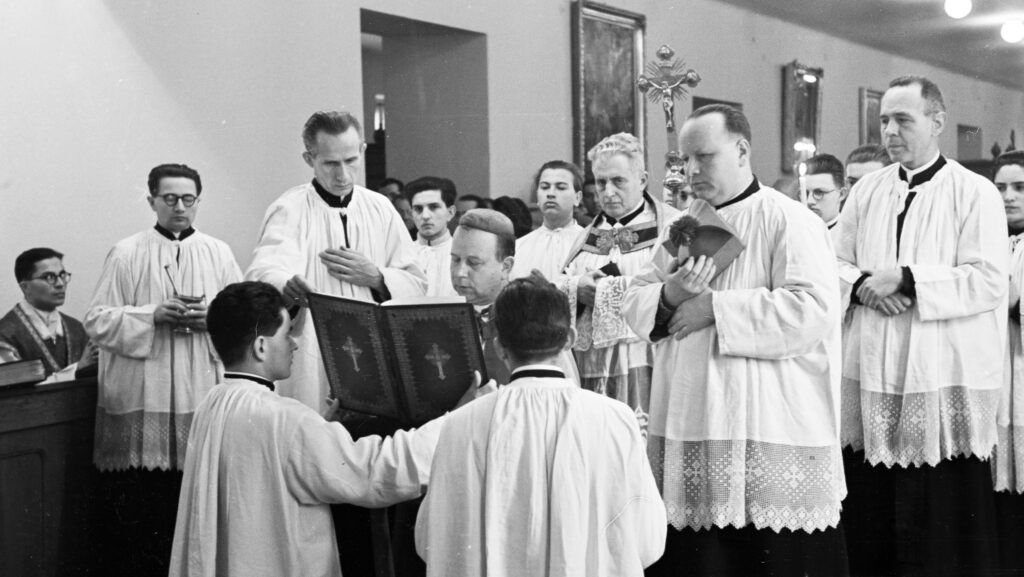Péter Mansfeld celebrated his 18th birthday only 11 days before his execution in 1959. The reasons for his hanging, warranted by the state socialist one-party establishment, is debated among historians today. But the collective Hungarian memory remembers him as a modern day martyr who fought for and believed in the freedom of Hungary until his premature death.
Péter Mansfeld was born into a working-class family in Budapest on March 10, 1941. His father was a barber, and her mother worked in shops. After World War II his father and grandfather were taken to the Soviet Union as prisoners of war. This practice was called ‘málenkij robot’, which stands for ‘a little work’ – a phrase under which Soviet soldiers took Hungarian citizens and soldiers deep into the Soviet Union to coerced labour camps. One third of the 500,000 who were taken beyond the border of Hungary never returned back to their homeland and among these lost souls were Péter Mansfeld’s grandfather.
He was only 15 in 1956 but nevertheless, he joined the struggle for Hungary’s freedom
While his family was hit hard by the war, Péter himself remained a good and cheerful student. He was an excellent lathe apprentice for which he won second prize in a student profession competition; his photograph was widely published in newspapers as an emerging young worker talent. Besides his studies, like all young boys his age, he liked football, and cars. While he had a very promising life, his faith dramatically changed in 1956 when the Revolution and Freedom Fight started. He was only 15 in 1956 but nevertheless, he joined the struggle for Hungary’s freedom. At first, when he wanted to join the freedom fighters, he was sent away by the revolutionaries, because he was deemed too young[1]. A bit later, his service was accepted – he became the driver of János Szabó who was the captain of the Revolutionaries at the Széna square. He was driving around the city delivering instructions and commands on the captain’s behalf; he did not engage in the fights directly.
When the resistance started to break down by the incoming Soviet army, Péter Mansfeld started to collect weapons – he even broke into the former Minister of Interior’s house to take arms – in which he intended to hide and use once the revolution recommenced. When he painted MUK (“Márciusban újra kezdjük”) – “In March we start it again!” – on a grocery shop wall in 1957, he showed his commitment to the revolutionary cause.[2]
After the Revolution was defeated, he was sent to work in factories where he committed some petty crimes such as stealing tools from his workplace. After stealing a car, he was briefly detained, but he escaped from the police station. During these difficult years after the Revolution, he became an even more committed enemy of Communism and the establishment. He firmly believed that the Revolution can and must be re-started. A band of five of his friends kidnapped a police chief sergeant, Vekerdi Elek, to collect weapons for the cause. A short while after the kidnapping, the group of boys – only one of them was above 18 – voluntarily released the chief sergeant unhurt. The group was also planning to distribute leaflets calling for a new revolution – which eventually they never had a chance to do. Finally, Mansfeld and his teammates got caught by the police when they were trying to steal another car on Martyrs’ Street in February 1958.
These actions after the defeat of the Revolution until his detention in 1958 gave rise to two alternative understandings of Péter Mansfeld’s life and motivations. The first narrative – the more popularly held – holds that the young boy notoriously believed in an anti-Communist revolution, and all that he did was to induce a new struggle against the establishment and to shake off the shackles of one-party rule. The other explanation holds that he was a petty criminal that was not driven by any greater motivation to fight for country and freedom. The latter narrative holds that had the establishment wanted to punish him for his involvement in 1956, he could have been detained earlier: there was no need to wait until 1958 and so the real reason for his execution was his crimes.[3]
Whichever narrative is true, what happened after Péter’s detention on February 19, 1958 is a tragedy. A long list of charges was put together against him – conspiracy against the state, theft, hiding illegal weaponry are just a few points from the charges. He was claimed “traitor of his class”, the prosecutor demanded a punishment for him without consideration to his young age. First, Péter Mansfeld was sentenced to life imprisonment. After appeal however, his sentence was changed to capital punishment.
It is a widespread belief in Hungary that the reason why he was not executed straightaway was because he was not yet 18 – as a minor the capital punishment could not be delivered to him. However, some suggest that the law of the time did give permission to execute revolutionaries and those who resisted the establishment even if they were minors.[4] However, it seems that Péter Mansfeld himself believed that he was not be executed due to his young age. He appeared reckless in front of the court, taking responsibility for the actions of his group, to save his fellow conspirator from a worse fate.
Celebrating the Hungarian Soviet Republic with the execution of an 18-year-old shows what communism really stands for: death and suffering
His young age did not save him. 11 days after his 18th birthday, he was executed on 21 March 1959. His death was confirmed 13 minutes after his hanging started which gave rise to speculation about how the executioner delayed his death to prolong his suffering on the rope. His execution was held on the 40th year anniversary of the establishment of the Hungarian Soviet Republic (it existed between 21 March 1919 – 1 August 1919. It was a brief attempt to establish Soviet rule in Hungary after World War I.[5] Celebrating the Hungarian Soviet Republic with the execution of an 18-year-old shows what communism really stands for: death and suffering. To teach the youth that which awaits anyone to resist the establishment, young students of the police academy were taken to the place of Péter Mansfeld’s execution to witness the young boy’s death.
Mansfeld’s body was thrown into an unmarked, nameless grave. Not even his family knew where he lied until 1989 when the regime was brought down. He was rehabilitated and reburied on 22 June 1990 at the 301st parcel of the New Public Cemetery (Új köztemető). His life and death became the symbol of martyrdom, heroic resistance and the crimes of Communism. Since 1989 many public places were named after him in Hungary; the street which wears his name in Poznań, Poland runs into the Roman (“Romek”) Strzałkowski street; Romek was a 13-year-old pupil who was shot dead during the anti-communist protests in Poznań in 1956. The streets of the two youngest martyrs of Hungary and Poland in Poznań now symbolise the unbreakable friendship between these two nations.
The last words of the young Hungarian martyr, Péter Mansfeld’s were:
‘Long live Hungary, long live my homeland, I love you, my mother!’
[1] ’Mansfeld Pétert 60 éve végezték ki’, Origo, (2019), https://www.origo.hu/tudomany/20190321-mansfeld-petert-nem-tudtak-megtorni-a-bortonben.html, accessed 18 March 2022.
[2] László Molnár, ’Mansfeld Péter: mártír volt, de másként’, Magyar Hang, (2019), https://hang.hu/kultura/mansfeld-peter-martir-volt-de-maskent-105864, accessed 18 March 2022.
[3] László Eörsi, ’Mansfeld Péter és Kultusza’, Népszabadság (2002) http://www.rev.hu/ords/f?p=600:2:::::P2_PAGE_URI:tanulmanyok/1956/mansfeld, accessed 18 March 2022.
[4] Sereg András, A Mansfeld-per: élt tizennyolc évet, Index (2021), https://index.hu/belfold/leporolt_aktak/2021/11/04/a-mansfeld-per-elt-tizennyolc-evet/, accessed 18 March 2022.
[5] Zoltán Udvardy, ’Nyolcvanéves lehetne ma Mansfeld Péter’, Híradó (2021), https://hirado.hu/belfold/cikk/2021/03/10/nyolcvaneves-lehetne-ma-mansfeld-peter#, accessed 18 March 2022.








